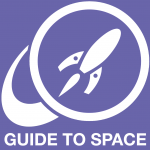Podcaster: Fraser Cain
Title: Guide to Space: Does Our Galaxy Have a Habitable Zone? Where Life Can Form in the Milky Way
Organization: Universe Today
Link: www.universetoday.com
Description: We’ve only seen Uranus and Neptune one time up close. There are now some mission ideas in the works that might take us back.
Bio: Fraser Cain is the publisher of Universe Today
Today’s sponsor: Big thanks to our Patreon supporters this month: Frank Tippin, Brett Duane, Jako Danar, Joseph J. Biernat, Nik Whitehead, Timo Sievänen, Steven Jansen, Casey Carlile, Phyllis Simon Foster, Tanya Davis, Rani B, Lance Vinsel, Steven Emert.
Please consider sponsoring a day or two. Just click on the “Donate” button on the lower left side of this webpage, or contact us at signup@365daysofastronomy.org.
Or please visit our Patreon page: https://www.patreon.com/365DaysOfAstronomy
Transcript:
I look forward to all the future missions that NASA is going to be sending out in the Solar System. Here, check this out. You can use NASA’s website to show you all the future missions. Here’s everything planned for the future, here’s everything going to Mars.
Now, let’s look and see what missions are planned for the outer planets of the Solar System, especially Uranus and Neptune. Oh, that’s so sad… there’s nothing.
It’s been decades since humanity had an up close look at Uranus and Neptune. For Uranus, it was Voyager 2, which swept through the system in 1986. We got just a few tantalizing photographs of the ice giant planet and it’s moons. What’s that? What’s going on there? What are those strange features? Sorry, insufficient data.
And then Voyager 2 did the same, zipping past Neptune in 1989. Check that out, and that, and this. What’s going here on Triton? Wouldn’t you like to know more? Well, too bad! You can’t it’s done, that’s all you get.
Don’t get me wrong, I’m glad we’ve studied all these other worlds. I’m glad we’ve had orbiters at Mercury, Venus, everything at Mars, Jupiter, and especially Saturn. We’ve seen Ceres and Vesta, and the Moon up close. We even got a flyby of Pluto and Charon.
It’s time to go back to Uranus and Neptune, this time to stay.
And I’m not the only one who feels this way.
Scientists at NASA recently published a report called the Ice Giant Mission Study, and it’s all about various missions that could be sent to explore Uranus, Neptune and their fascinating moons.
The team of scientists who worked on the study considered a range of potential missions to the ice giants, and in the end settled on four potential missions; three that could go to Uranus, and one headed for Neptune. Each of them would cost roughly $2 billion.
Uranus is closer, easier to get to, and the obvious first destination of a targeted mission. For Uranus, NASA considered three probes.
The first idea is a flyby mission, which will sweep past Uranus gathering as much science as it can. This is what Voyager 2 did, and more recently what NASA’s New Horizons did at Pluto. In addition, it would have a separate probe, like the Cassini and Galileo missions, that would detach and go into the atmosphere to sample the composition below the cloudtops. The mission would be heavy and require an Atlas V rocket with the same configuration that sent Curiosity to Mars. The flight time would take 10 years.
The main science goal of this mission would be to study the composition of Uranus. It would make some other measurements of the system as it passed through, but it would just be a glimpse. Better than Voyager, but nothing like Cassini’s decade plus observations of Saturn.
I like where this is going, but I’m going to hold out for something better.
The next idea is an orbiter. Now we’re talking! It would have all the same instruments as the flyby and the detachable probe. But because it would be an orbiter, it would require much more propellant. It would have triple the launch mass of the flyby mission, which means a heavier Atlas V rocket. And a slightly longer flight time; 12 years instead of 10 for the flyby.
Because it would remain at Uranus for at least 3 years, it would be able to do an extensive analysis of the planet and its rings and moons. But because of the atmospheric probe, it wouldn’t have enough mass for more instruments. It would have more time at Uranus, but not a much better set of tools to study it with.
Okay, let’s keep going. The next idea is an orbiter, but without the detachable probe. Instead, it’ll have the full suite of 15 scientific instruments, to study Uranus from every angle. We’re talking visible, doppler, infrared, ultraviolet, thermal, dust, and a fancy wide angle camera to give us those sweet planetary pictures we like to see.
Study Uranus? Yes please. But while we’re at it, let’s also sent a spacecraft to Neptune.
As part of the Ice Giants Study, the researchers looked at what kind of missions would be possible. In this case, they settled on a single recommended mission. A huge orbiter with an additional atmospheric probe. This mission would be almost twice as massive as the heaviest Uranus mission, so it would need a Delta IV Heavy rocket to even get out to Neptune.
End of podcast:
365 Days of Astronomy
=====================
The 365 Days of Astronomy Podcast is produced by Planetary Science Institute. Audio post-production by Richard Drumm. Bandwidth donated by libsyn.com and wizzard media. You may reproduce and distribute this audio for non-commercial purposes. Please consider supporting the podcast with a few dollars (or Euros!). Visit us on the web at 365DaysOfAstronomy.org or email us at info@365DaysOfAstronomy.org. This year we will celebrates the Year of Everyday Astronomers as we embrace Amateur Astronomer contributions and the importance of citizen science. Join us and share your story. Until tomorrow! Goodbye!


